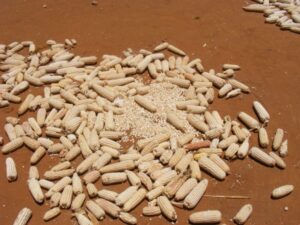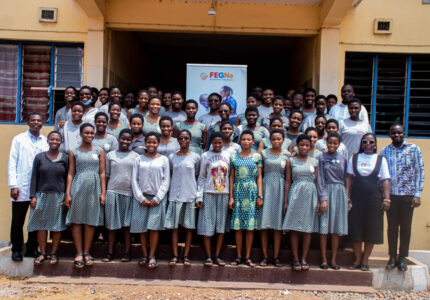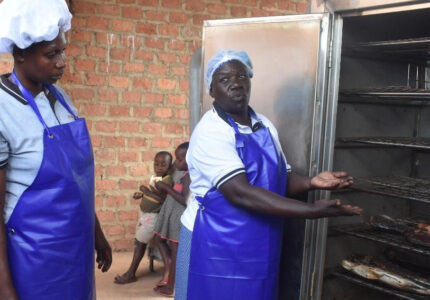Exclusive interview with Paloma Fernandes, CEO of Cereal Millers Association
Food safety as a key pillar of food security is coming to fore now more than ever. What with the numerous recalls of food stuffs, from retail outlets, mostly constituting the continent’s key staple, maize.
This year, the Cereal Millers Association (CMA) in Kenya celebrates its 20th anniversary. With the critical role expected to be played by private sector to address food safety concerns, the association’s Chief Executive Officer (CEO) for the last 13 years, Paloma Fernandes speaks candidly and at length with Rootooba, on the yet so destructive poison, aflatoxins, and why a permanent solution to tame the toxin remains elusive.
Who does the Cereal Millers Association represent?
CMA represents the grain milling industry comprising various cereals and pulse millers and grain traders in Kenya. Our mission is to provide safe, affordable and adequate food to our consumers. Our membership comprises about 50 large grain milling and trading companies. We represent about 40% of total maize milling capacity for maize in Kenya and over 85% of the wheat milling capacity. We reach over 10 million consumers of maize flour and over 35 million consumers of wheat flour. Our members operate mills in various parts of the country that include Mombasa, Machakos, Mwingi, Kitui, Nairobi, Thika, Nakuru, Uasin Gishu, Kitale, Kisumu, Malindi amongst others.
What is its mandate?
The Association was formed with the objective of dealing with policy issues in relation to the Government. Our top priority then was to lobby against high wheat import duties, address problems faced with cyclical maize shortages and lobby for a liberalized maize and wheat market. Today the CMA places more emphasis on the provision of safe and affordable food for our consumers.
Cereals, particularly maize, play a significant role in Kenya’s food security system. However, most households have had to condone with shifting prices. What is causing the fluctuations?
The price fluctuations are largely a result of demand and supply. Demand for cereals in Kenya usually exceeds the supply of what is grown locally and therefore Kenya imports maize from Tanzania and Uganda to meet the deficit. When the region cannot meet the demand, we then have to import from further afield, mainly Mexico and South Africa, as happened in 2017 and 2020. The government’s response to shortages to allow importation of maize is a good measure but usually comes at the peak of a crisis and when maize is imported, port delays and Kenya’s infrastructure constraints also contribute to a higher cost to get this maize to mills even when the global price is low. On the other hand, maize supplies are affected by weather patterns, pests (e.g. armyworm, locusts) making it quite difficult to predict supply. This leads to volatility in prices.
Government interventions in the market have also played a role in price in the market, where the Government sets arbitrary prices to be paid to maize and wheat farmers. Market forces are generally not taken into consideration during this decision making process.
The COVID 19 pandemic also resulted in the holding of grains and pulses by farmers, brokers and traders, hoping that the Government would directly get involved in procurement to support vulnerable members of society. This, too, led to increased costs and shortages in the market.
What has been your experience in grain trade and milling in the last couple of months, particularly during the COVID-19 pandemic that still rages on?
Millers have faced a significant drop in demand for their products. According to the Kenya National Bureau of Statistics – (KNBS) Economic Survey 2020 report, economic activities have slowed due to restrictions like containment, cessation of movement in certain areas and the nationwide curfew.
This has adversely affected the manufacturing sector leading to disrupted supply chains, increased input cost, scaled-down manufacturing operations and cash flow challenges.
We have seen increased aflatoxins levels in our maize as there has been reduced testing and surveillance at the farmer level as well as at the borders.
Recently, the government allowed millers to import maize; however, the court stopped distribution or use of the maize until the commodity was tested to ensure that it meets safety parameters including aflatoxin contamination thresholds. What is the current status of the importation?
There was an error in the gazette notice that was first issued. However, that was corrected in a subsequent gazette notice. Imported maize will have to meet the requirements of KEBS and will be issued with a Certificate of Conformity, with pre-shipment inspection done at the source. We expect the imported maize to arrive imminently.
Research shows that Kenya has amongst the highest levels of aflatoxin contamination and exposure globally. Besides, there is a growing demand for aflatoxin-safe products. What are you doing to meet this demand?
In 2010, the CMA took a bold step to self-regulate in the fight against aflatoxins and were the first association in East and Central Africa to self-regulate. In line with this, CMA members have adopted a rigorous code of conduct to test maize received by the association members at their mills. Our maize millers have quality control staff whose sole responsibility is to ensure that all raw material purchased for milling undergoes necessary scrutiny as well as monitors the product that is coming out. Our maize millers also have internal quality systems that they enforce daily.
Our technical teams also work with a team of food safety technical experts such as Techno-serve, Aflatoxin Proficiency Testing for East and Central Africa (APTECA), Beca ILRI Hub, University of Nairobi in each mill to ensure compliance to food safety requirements and fortification. Our team of technical experts audit CMA members regularly and all new members have to be vetted by our technical partners to ensure that they are following food safety regulations before joining CMA. Audit reports are sent to the Secretariat and action is taken on non-compliance. Additionally, CMA has embarked on food safety capacity building initiatives for its members. Several fora, discussions and training sessions have been conducted to ensure food safety compliance.
What is the testing capacity by millers for aflatoxins?
We need to appreciate that while it is not possible to test every bag of maize received at our mills (approx 1.6 million 90kg bags per month) and every packet of maize flour (approx. 54 million 2kg packets per month) released for sale, we have a rigorous testing mechanism in place. For example, for approximately 5000 trucks that come to our mills on a monthly basis, we are able to conduct at least two tests using composite samples per truck as a minimum, to ensure that the maize is safe. In terms of the final product, we are able to test our finished products at least twice in an 8 hour shift and ensure that we retain some samples to verify our test results.
Our members share their aflatoxin contamination results on a bi-monthly basis. This helps us understand aflatoxin levels in the market and acts as a warning to millers to take further precaution. Through our data collection processes, we are able to get information about the regions that the contaminated supply comes from including across the border, and this data is being shared with the Government to highlight areas where aflatoxin- contaminated maize is coming from, so that action is taken accordingly.
Further, our mills have in-house laboratories which test at intake and before the product is packed. Our millers are using different test kits based on different technologies that include lateral flow methods, ELISA based technology and immunoaffinity columns.
In 2014, CMA members began working with APTECA to implement a process approach to measure and manage aflatoxin risk. Accurate measurement of aflatoxins is complicated by the nature of the toxin and the challenges associated with sampling and testing maize. To standardize these processes and reduce the variability of aflatoxin test results, APTECA promotes the use of uniform sampling, testing equipment and methods, maintenance of records that enable third party audit and verification, proficiency testing, use of laboratory control samples, and third party verification.
In addition, all CMA members have been trained on aflatoxin measurement and have protocols at par with globally accepted good manufacturing practices.
How much of grain is rejected by millers as a result of aflatoxin contamination, beyond the required regulatory threshold of 10ppb?
Rejection rates due to aflatoxins contamination in the past three months have been in the range of 32% to 69%. Through our data collection mechanisms, our information on rejection levels is fairly accurate as we receive reports on rejected trucks complete with registration numbers, levels of aflatoxin contamination and quantities rejected. This information is shared with Government offices so that they are aware of the extent of the problem.
What happens to the maize that your members reject?
Whenever we reject maize, in most cases it goes right back to the food chain through posho mills or smaller unregulated mills or ends up in animal feed but is hardly ever destroyed.
Once contaminated maize is rejected from the millers, it changes hands, devalues in price, and is then sold at a discount of almost 400-500 shillings less than a 90kg bag of maize within specified limits of 10ppb. This maize is then sold to willing buyers in the food chain who can then place their products on the shelves much cheaper than those observing stringent testing. The price differential of approximately Kshs 10 on a 2kg pkt of flour makes it hard for those doing the right thing to compete.
Why is the impact by the private sector in addressing aflatoxins contamination still not yet felt?
There is always this inherent misconception that millers are not addressing aflatoxins in maize. Aflatoxins contamination starts in the fields, and therefore much needs to be done around regulating farming practices where mitigation might be most effective. Secondary issues include post-harvest handling of maize, monitoring and enforcing adequate quality along the maize value chain. Therefore, it is inefficient and cost-prohibitive to put all the responsibilities of aflatoxin mitigation solely onto the millers’ shoulders.

Poor handling can lead to aflatoxin accumulation in maze
The Government needs to understand that the focus needs to shift from flour to maize. Flour is extensively being targeted by regulators when they should be looking more at maize grain in the different value chains including farmers, aggregators, transporters among others. Catching the problem early virtually eliminates the need to monitor flour extensively.
Targeting maize in the value chain as opposed to flour addresses the issue more effectively and would be more impactful since it will also extend to flour coming out of small mills -currently that flour is not even monitored-. This is more cost-effective for regulators and extends their footprint beyond large scale maize flour millers’ products.
Is there more you would like the government to do as custodians of regulation and active players in knowledge management?
The Government needs to better coordinate efforts on aflatoxin research to minimize repetitions and promote efficient use of resources. Government also needs to encourage use of pre-and post-harvest methods at hand to rid the value chain of aflatoxins. For example, use of Aflasafe technology and good agricultural practices pre-harvest and proven drying and storage methods post-harvest. Contract farming needs to be encouraged to promote traceability of maize grain coming from various regions and ease implementation of quality systems as well as good agricultural practices.
Government must work with its scientists to look at alternative uses for maize that contains higher levels of aflatoxins. Using scientific evidence, the thresholds allowed can be increased to allow higher levels for animal feeds, especially in animals that tolerate aflatoxin contamination more. In the absence of alternative uses, more contaminated maize will find its way back to the value chain.
Government must take it upon itself to educate stakeholders on the danger of commercializing and consuming moldy foods. Additionally, it must undertake training of personnel at all levels (scientists, technicians, extension agents, local farmers) in sampling protocol and modern methods of mycotoxin analysis.
The Government also needs to establish subsidies and reduce tax tariffs, on the inputs that reduce aflatoxins and on kits that help in aflatoxin detection.
What plans do you have towards meeting the demand of your consumers with regards to prices, quality, quantity, and aflatoxin safe products?
We are lobbying the Government to consider alternative uses for contaminated maize as well as working with smaller milling associations to build their capacities with regard to safe food. We continuously continue to encourage certificates of conformity for products along the value chain. Importation of maize at this time will also certainly assist to bridge the gap and stabilize prices of maize in the country in the short term.
What further recommendations would you make in order to create a better environment for millers to operate and improve maize production and accessibility ?
Let market forces determine cost of maize with no government interference.Moreover, there should be better harmonization of regulators such as Kenya Bureau of Standards (KEBS), Ministry of Health, Agriculture and Food Authority (AFA), who are managing food safety and consumer protection so that there is no duplication of regulatory roles which increases cost of doing business and creates confusion in the marketplace.
Relevant players must be able to bring down cost of production by enhancing yields per acre through better farming practices, soil testing, mechanization of planting and harvesting, right fertilizer application and reduction of post-harvest losses through better grain storage options. There should also be better planning of availability of maize from within and across borders so that there is no spike in maize prices which eventually hurts consumers. The implementation of the warehouse receiving program should also be fast tracked.
If you were given a billboard with a million viewers, what would be your key message to your audiences in one minute?
I would plead with farmers and consumers, to make food safety a personal responsibility; I would remind traders and millers that if they can’t consume their own product because it is substandard, they must not allow fellow citizens to consume it. I would urge the government to take responsibility and lead from the front.
Source: rootoba.com






